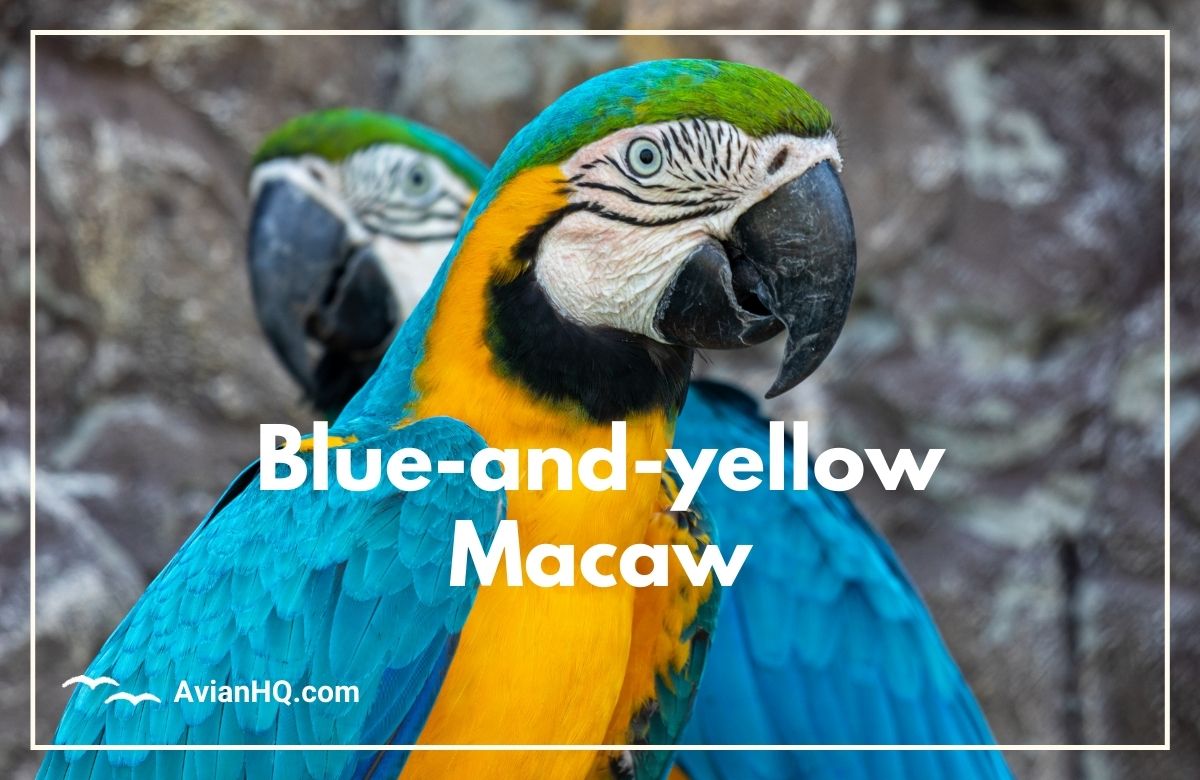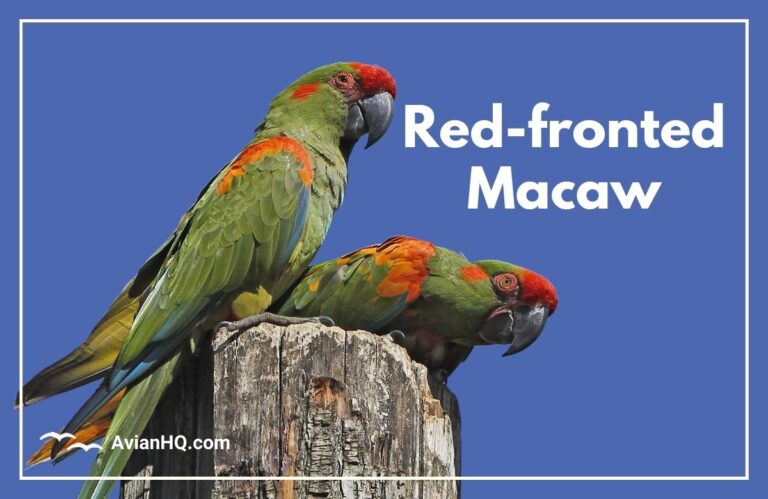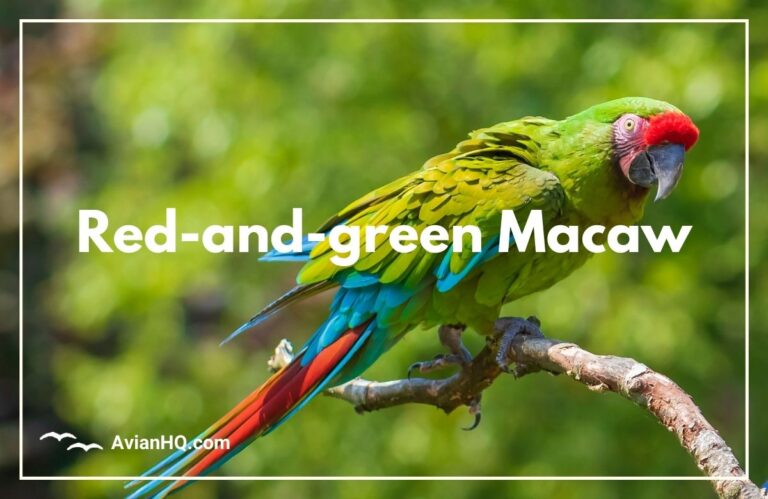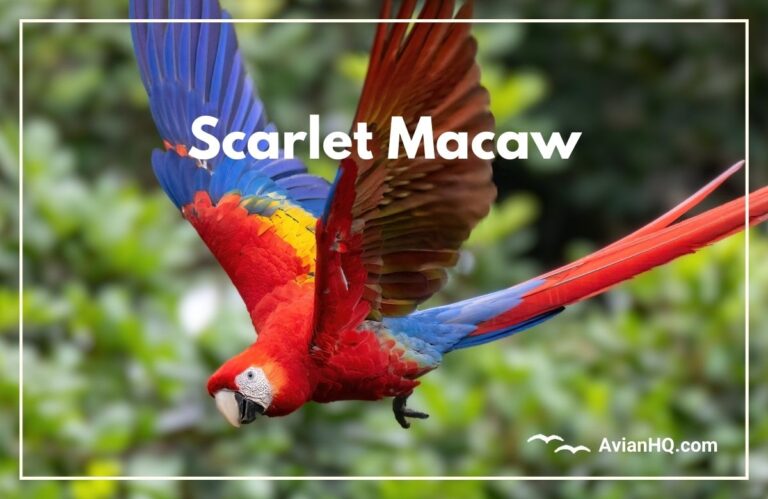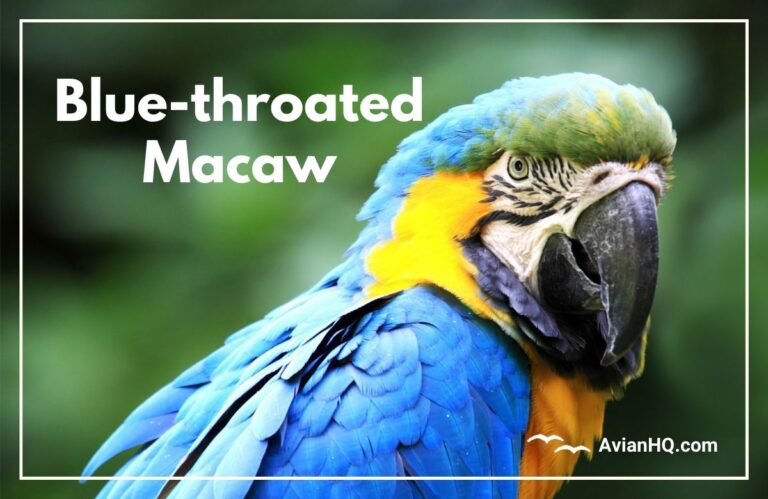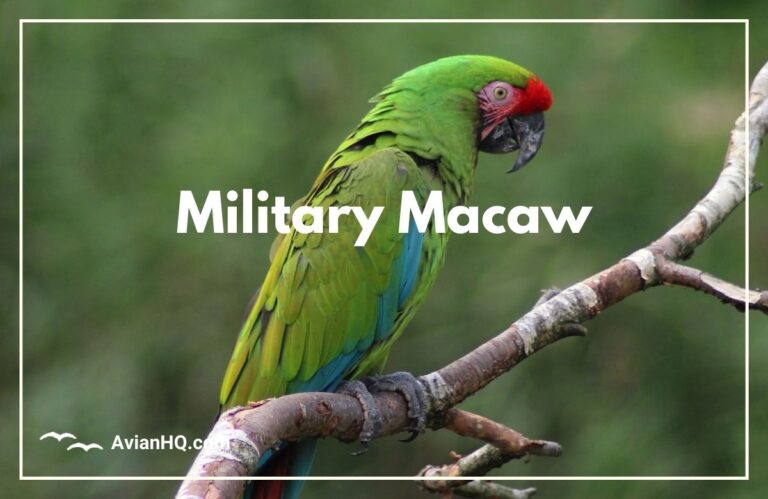Blue-and-yellow Macaw (Ara ararauna)
The blue-and-yellow macaw (Ara ararauna) is considered one of the most beautiful and majestic parrot species in the world. When you glimpse these colorful tropical birds with their piercing cries, it’s easy to understand why they have become symbols of the rich wildlife found in Central and South America’s rainforests.
“The blue-and-yellow macaw’s bright plumage and intelligence have made it popular in captivity and in conservation programs seeking to protect endangered rainforest species.”
Blue-and-yellow macaws range across Panama, Colombia, Venezuela, Guyana, Suriname, French Guiana, Brazil, Peru, Bolivia, Ecuador, and Paraguay. Their habitat spans lowland humid forests, swamps, savannas, and woodlands.
These parrots measure 76-86 centimeters (30-34 inches) long and weigh 0.9-1.5 kilograms (2-3 pounds). Their most distinctive feature is the contrast between their golden-yellow underside and bright blue back and wings. The forehead has a gradient of lime green hues.
Blue-and-yellow macaws are highly social and noisy birds. They form lifelong pair bonds and can live for 30-35 years in the wild. Their high intelligence and affectionate nature have also made them increasingly popular as pets and companions.
This article provides a comprehensive overview of the natural history, physical appearance, habitat, diet, breeding ecology, behavior, conservation status, and cultural significance of the magnificent blue-and-yellow macaw. Read on to learn more about this iconic rainforest dweller!
History and Taxonomy
The blue-and-yellow macaw has a long history of recognition by both indigenous peoples and European explorers. Swedish naturalist Carl Linnaeus first scientifically described the species in 1758, giving it the binomial name Psittacus ararauna. It has since been reclassified into the genus Ara, named for the bird’s characteristic screaming “ará!” vocalizations.
“The blue-and-yellow macaw’s genus name Ara comes from the Tupi Indian word ‘ará’ that phonetically mimics the parrot’s loud calls.”
This species has no identified subspecies across its large range. However, Trinidad and Caribbean populations showed more orange or “butterscotch” underside plumage compared to mainland birds.
The species name ararauna likely comes from the Tupi Indian phrase arárá úna translated as “large dark parrot.” German explorer Georg Marcgrave first recorded this name in 1648 when documenting the native wildlife of Brazil.
So while Linnaeus formally named the blue-and-yellow macaw for science in the 1700s, indigenous groups had known these birds and their ear-piercing cries ringing through the rainforest canopy for many centuries before.
Physical Appearance
The blue-and-yellow macaw is unmistakable thanks to its vivid blue and yellow coloration. These parrots measure 76-86 centimeters (30-34 inches) long from beak to tail tip. Their wingspan reaches an impressive 1-1.4 meters (3-4.5 feet). Weight ranges from 0.9-1.5 kilograms (2-3 pounds).
The upper body has bright blue feathers across the back, wings, and tail. The underside is a rich, golden yellow or orange hue that may appear more “butterscotch” in some populations. The facial area is white with fine green feather lines, and the forehead shows lime green gradients.
“From beak to tail tip, the blue-and-yellow macaw’s vibrant colors make it one of the most strikingly beautiful parrots in the world.”
The large black beak is adapted for cracking hard nuts and seeds, a major part of the species’ diet. Legs and feet are gray, with black talons used for grasping and climbing. The eyes are pale yellow, circled by a ring of bare white facial skin.
Both male and female macaws share this same vibrant plumage. Juveniles start out with darker gray or brown eyes that lighten to yellow as they mature. Their feathers obtain full adult coloring by around 3-4 months old.
Habitat and Distribution
The blue-and-yellow macaw inhabits a wide range across Central and South America. Its territory stretches from central Panama down through Colombia, Venezuela, Guyana, Suriname, French Guiana, Brazil, Peru, Bolivia, Ecuador, and Paraguay.
“With a habitat range spanning over 7 million square kilometers, the blue-and-yellow macaw is considered the most widespread macaw species.”
These parrots occupy various lowland tropical habitats including humid forest edges, swamplands, open woodlands, and savannas. They are often found near water sources such as rivers and streams. Blue-and-yellow macaws nest in the dead palms of swampy areas and forage in adjacent woodlands and grasslands.
Small introduced populations have become established in Puerto Rico and Florida as recent escapees from the pet trade. However, their native habitats still center on regions of South America.
In terms of elevation, blue-and-yellow macaws typically inhabit zones up to 500 meters (1,640 feet) in altitude. This allows them to spread across both wet lowland areas as well as drier highland regions. But palm swamps remain vital for nesting and feeding sites.
Diet and Feeding
The blue-and-yellow macaw is an omnivorous and opportunistic forager that takes advantage of a wide variety of food sources. Their powerful beaks allow them to crack hard palm nuts and seeds which make up a major part of the diet.
Favorite foods include:
| Food Type | Key Nutrients |
|---|---|
| Fruits | Vitamins, antioxidants, natural sugars |
| Nuts and Seeds | Fats, proteins, minerals |
| Flowers | Nectar, vitamins, minerals |
| Vegetation | Fiber, vitamins |
| Clay | Minerals, detoxification aid |
Blue-and-yellow macaws often gather in groups of 25 individuals or more when feeding. They can be seen quietly perched on high branches cracking hard nuts or nibbling fruits. At times, large flocks congregate along river banks to consume nutrient-rich clay soils.
“The blue-and-yellow macaw uses its formidable black beak like a nutcracker to break through tough shells and access the nutritious seeds inside.”
Paired birds tend to forage closely alongside one another. But even when feeding in groups, these macaws maintain a level of equality amongst all flock members.
Breeding and Reproduction
Blue-and-yellow macaws reach sexual maturity between 3-6 years of age. They form monogamous pair bonds that often last for life. The breeding season ranges from December through May depending on the region.
| Characteristic | Details |
|---|---|
| Nesting Sites | Large tree cavities or termite mounds |
| Clutch Size | 2-4 eggs per clutch |
| Incubation Period | Approximately 25-28 days |
| Fledging Time | Around 90-100 days |
These parrots nest almost exclusively in dead palms found in swampy areas. They use their curved beaks to dig out a cavity in the rotting interior of the fallen tree trunks. The female then lays 2-4 eggs inside this protected space.
“Both male and female blue-and-yellow macaws aggressively defend their nest site, eggs, and chicks from potential predators.”
Incubation lasts 25-28 days and is performed primarily by the female. Typically only 1-2 chicks survive as the stronger nestlings outcompete their siblings for food. After hatching, the altricial chicks remain blind and featherless for several weeks.
They fledge from the nest at 12-14 weeks of age but still appear quite gangly and uncoordinated. The juvenile birds stay close to their parents during a lengthy post-fledging period to continue developing their flight skills and foraging techniques.
Behavior and Ecology
The blue-and-yellow macaw is a highly social and noisy species. Their loud calls can often be heard ringing through the forest canopy. Small groups of mated pairs may join together in flocks of 25 individuals or more.
Roosting patterns vary across seasons and habitat types. During nesting periods, mated pairs roost alone closer to palm swamps. In the non-breeding seasons, macaws gather in communal overnight roosts that may include hundreds of squawking birds packed into a few tall trees.
For most of the day, blue-and-yellow macaws forage for food while perched high in the treetops. Pairs tend to fly closely together from tree to tree, their wings nearly touching. They use their curved beaks to vigorously break open hard palm nuts and extract the nutritious seeds.
These opportunistic feeders interact peacefully with other parrot species at shared feeding and clay lick sites. But they remain alert and ready to loudly take flight at any signs of potential danger in their rainforest environment.
Conservation Status
The blue-and-yellow macaw is currently listed as Least Concern on the IUCN Red List of Threatened Species. However, there are worrying declines in certain portions of its territory.
The global wild population has not been precisely quantified but likely numbers over 10,000 mature individuals and may approach one million birds. More concerning is that their total numbers continue decreasing from habitat destruction and trapping for the pet trade.
“Over 60,000 blue-and-yellow macaws were legally exported from their native countries for the pet trade just from 1981-2015.”
These parrots became extirpated in Trinidad due to severe deforestation and hunting over past decades. But a reintroduction program starting in 1999 successfully reestablished a protected breeding population on the island after translocating captive-bred birds from Guyana.
Their bright colors and intelligence that make them excellent companion parrots also drives a lucrative illegal wildlife trade. CITES has classified the blue-and-yellow macaw under Appendix II which restricts commercial export to safeguard wild populations.
Cultural Significance
The blue-and-yellow macaw has long held cultural symbolism for indigenous peoples across South and Central America. Images of these colorful parrots appear in the artwork and oral stories of many native groups.
The Tupi people of Brazil named this species after its screaming “araaa!” vocalizations that echo through the rainforest. Other names like “blue macaw” or “yellow-breasted macaw” also highlight the contrasting color pattern that stands out so vividly against tropical green forests.
Today the blue-and-yellow macaw remains an iconic symbol of tropical wilderness regions in Central and South America. Its popularity in zoos and as an exotic pet continue to highlight the importance of parrot conservation and habitat preservation efforts in these regions.
Conclusion
The blue-and-yellow macaw is one of nature’s most vibrant and charismatic bird species. Its gleaming blue plumage contrasted against rich yellow undersides makes this parrot a star attracting attention both in its native habitat and in captivity across the world.
Yet despite over 60,000 being legally traded globally as pets in recent decades, relatively little scientific research has focused on blue-and-yellow macaw ecology, reproduction, and behavior in the wild. More studies on their population numbers and conservation threats would aid protection efforts aimed at preserving this iconic rainforest inhabitant.
From indigenous legends to their modern-day symbolism of tropical wilderness, the magnificent blue-and-yellow macaw remains an integral part of South and Central America’s natural heritage. Ensuring the species’ colorful beauty continues dazzling future generations requires proactive habitat conservation across its range from Panama to Paraguay.

